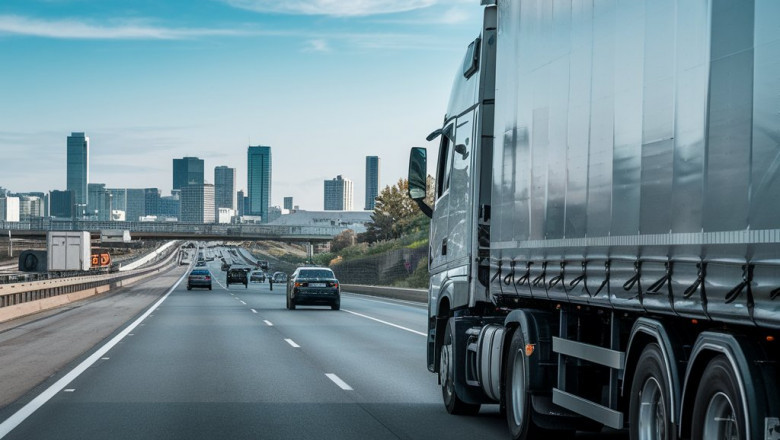views
How Technology is Transforming the Truck Dispatcher Role in 2025?
The trucking industry is entering a new era in 2025, and the pace of change is relentless. It’s not just about autonomous vehicles or electric trucks; those headlines grab attention, but under the radar, the daily operations behind the scenes are being redefined. One of the most profound transformations is happening within the role of the truck dispatcher. What used to be a role driven by paperwork, phone calls, and manual coordination has evolved into a tech-savvy position that now sits at the intersection of logistics, data science, and customer service.
This transformation isn’t optional anymore. As customers demand faster delivery times, fewer errors, and better communication, dispatchers must adapt to new digital tools and smarter platforms. Fleets, large and small, are expecting dispatchers to manage operations using centralized dashboards, predictive analytics, and even AI-assisted decision-making. The traditional dispatcher role is no longer about just assigning loads. It’s about optimizing fleets in real time, minimizing deadhead miles, and anticipating problems before they occur. Technology hasn’t eliminated the need for dispatchers, but it has reinvented the role entirely. The job description has shifted from reactive communication to proactive logistics management. Not too long ago, dispatchers relied heavily on spreadsheets, phone calls, and radio communication. The process was prone to delays, miscommunications, and wasted time. Today’s systems are smarter, faster, and designed for scale. Load Boards Are Now AI-Powered: Modern dispatchers use intelligent load boards that recommend optimal routes and backhauls using historical traffic and rate data. Fleet Management Software Integration: Dispatchers have real-time visibility into every vehicle’s location, maintenance status, and load weight. Automated Notifications: Drivers, shippers, and receivers are automatically updated on ETAs and delays, reducing back-and-forth calls. This shift frees up dispatchers to focus on strategy rather than administration. In 2025, being a dispatcher means being data literate. Understanding numbers, patterns, and trends is critical. KPIs Are Front and Center: Average dwell time, deadhead percentage, and fuel efficiency are now daily metrics, not monthly reviews. Predictive Analytics Tools: Software predicts which routes may cause delays based on historical weather, traffic, and driver behavior. Performance Dashboards: Dispatchers can see, at a glance, which drivers are performing best and which loads are most profitable. The job has become less about gut instinct and more about interpreting dashboards and trendlines. Work-from-anywhere is the new reality for dispatching teams. Most modern truck dispatch services have moved to the cloud. This means dispatchers can work from anywhere with a stable internet connection. Real-Time Collaboration: Multiple dispatchers across different time zones can manage the same fleet without delay. Centralized Information: No more losing paperwork or misreading handwriting. All trip data, logs, and documents are in one place. Scalable Operations: Fleets can grow without adding new physical offices or infrastructure. This setup is especially helpful for growing logistics companies that want to expand without being tied to physical locations. Some of the dispatcher’s most time-consuming tasks like driver check-ins and appointment reminders are now handled by automated bots. 24/7 Availability: Bots can check in with drivers, schedule appointments, and respond to basic queries anytime. Reduced Human Error: Bots send consistent, correct messages, avoiding miscommunication. Integration with ELDs: These bots can access driver logs and prevent scheduling conflicts automatically. It’s not about replacing humans, it’s about offloading repetitive tasks so humans can focus on higher-impact work. Artificial intelligence has entered the trucking dispatch arena in a big way and it’s only accelerating. Smart dispatching software can now suggest the best available load for each truck, based on: Route optimization Driver availability HOS (Hours of Service) compliance Load preferences and history AI improves load-matching accuracy and helps avoid costly empty miles. Dispatchers can receive alerts for trucks that are likely to need service soon, based on: Engine diagnostics Driving behavior Mileage and terrain patterns This minimizes breakdowns and keeps fleets rolling. AI flags trips that deviate from planned routes or are trending late, helping dispatchers respond before a customer complains. Alerts for Detours or Weather Delays Suggestions for Backup Drivers or Alternate Routes Automatic ETA Recalculations for Customers AI isn’t making decisions for dispatchers, but it’s making sure they have all the best data when it’s time to act. As tools evolve, human skills become more valuable, not less. Drivers still need support. Customers still need clarity. Dispatchers need to be good listeners, patient communicators, and quick problem solvers. Clear writing for digital updates Emotional intelligence in high-stress scenarios Cross-cultural communication for diverse teams Even with smart software, a kind voice on the line still matters. Technology is constantly changing. The best trucking dispatcher in 2025 is one who stays curious and is willing to learn. Keeping up with new tools and software Participating in ongoing training Embracing change instead of resisting it This mindset separates great dispatchers from the rest. Companies that embrace the new dispatching model are already seeing measurable improvements. Digital transformation in dispatching is quickly becoming a competitive advantage rather than a luxury. The truck dispatch services landscape in 2025 looks nothing like it did even five years ago. Technology has completely reshaped the role of the dispatcher, transforming them from call coordinators to intelligent, data-driven operations managers. Smart software, AI insights, cloud platforms, and remote capabilities have all come together to redefine what it takes to succeed in this role.Evolution of the Truck Dispatcher Role
From Manual to Smart Systems
Data-Driven Decision Making
Remote Dispatching and Decentralized Teams
Cloud-Based Platforms
Virtual Assistants and Chatbots
Rise of AI and Machine Learning
AI for Load Matching
Predictive Maintenance Alerts
Real-Time Exception Management
Soft Skills Are Becoming Just as Crucial
Communication and Empathy
Adaptability and Learning Mindset
The Impact on Logistics Companies
Takeaway














Comments
0 comment